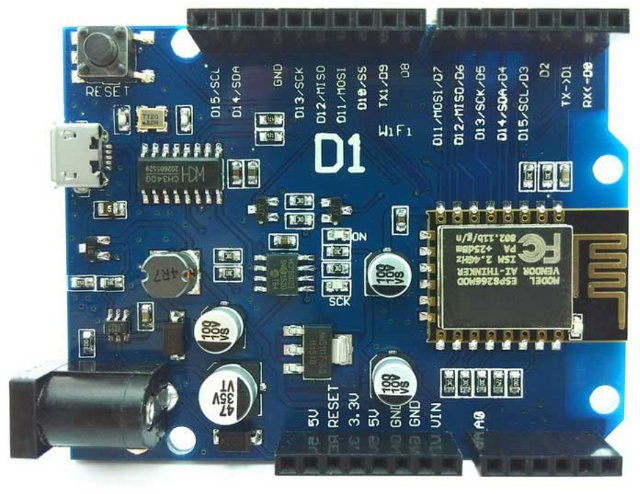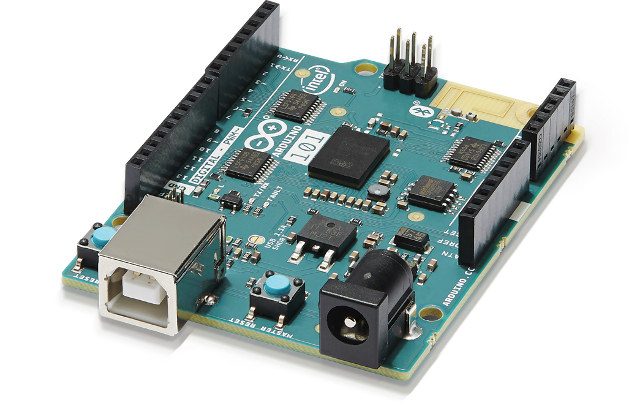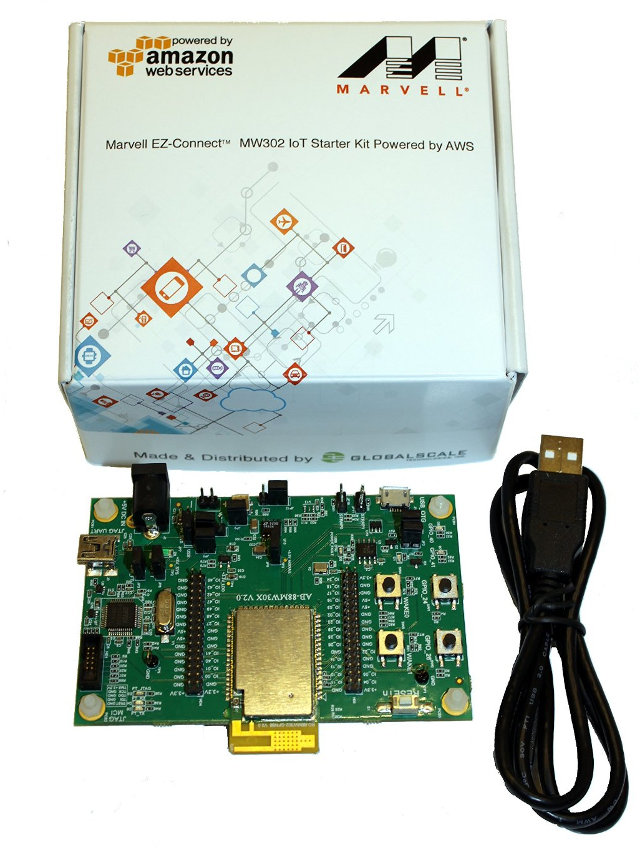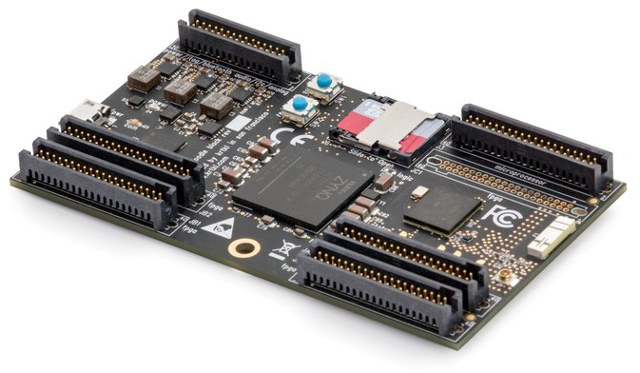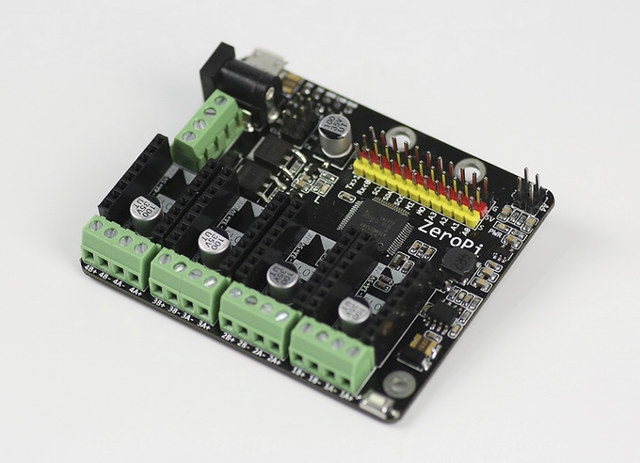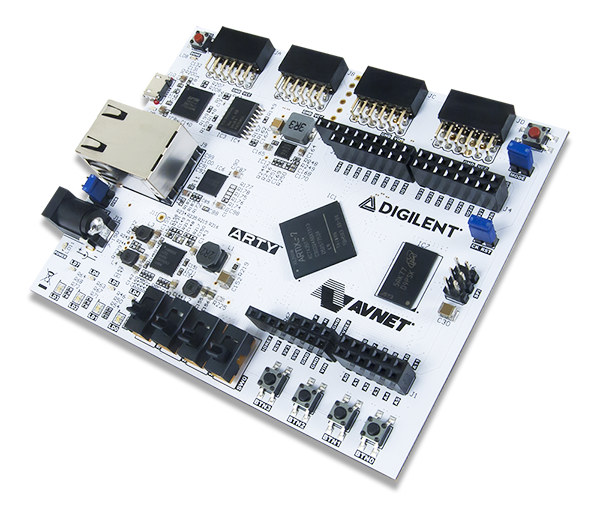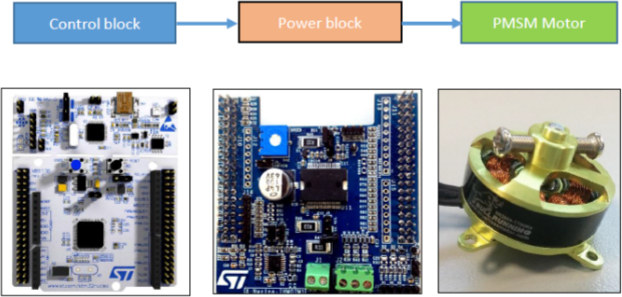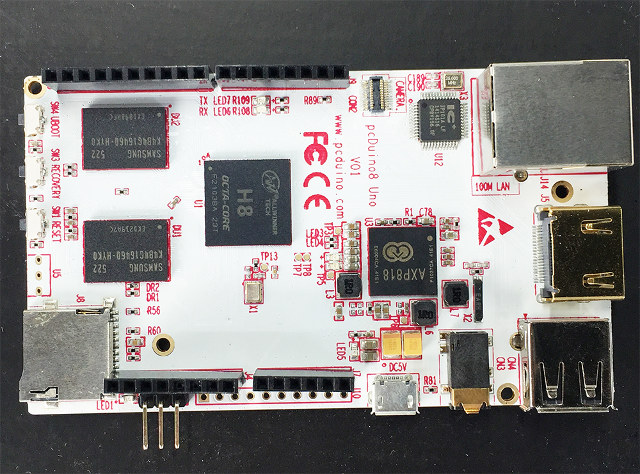We’ve already seen the Arduino IDE supports ESP8266(-EX) WiFi SoC, and some companies have designed Arduino shields for ESP8266 modules, but so far I had never seen an ESP8266 board with Arduino UNO form factor supporting Arduino shields, and that’s exactly what showed up in DX new arrivals RSS feed with a white label ESP-12E UNO board selling for $11.75 including shipping. The “D1” board has the following specifications: ESP8622 Module – AI-Thinker ESP12-E module (as found in NodeMCU) based on ESP8266-EX SoC @ 80 or 160 MHz with 4MB flash Connectivity – 802.11 b/g/n with PCB antenna. Supports station / softAP / SoftAP + station modes, WPA/WPA2 security. I/Os 11x Digital I/O pins 1x Analog Input pin I/O logic level: 3.3V ADC pin (A0) input voltage: 0-3.3V Debugging – Via micro USB using CH340G USB-TTL serial chip Misc – Reset button Power Supply – 6-24VDC via DC jack, 5V via […]
Arduino 101 Board Features Intel Curie Module, Bluetooth LE, and Sensors
I’ve recently learned that the battle between the two Arduino teams, namely Arduino SRL (arduino.org) in Italy, and Arduino LLC (arduino.cc) in the US, had taken another turn with Arduino LLC now branding their boards as Arduino in the US, and Genuino in the rest of the world. This may certainly bring confusion to new comers, especially as they have to deal with different version of the Arduino IDE. With that backdrop, Arduino LLC has now introduced Arduino 101 (aka Genuino 101) board powered by Intel Curie module with Quark SE x86 SoC with Bluetooth LE and a 6-axis combo sensor. Arduino 101 specifications: SoC – Intel Curie compute module including an Intel Quark SE x86 32-bit microcontroller @ 32 MHz and an a DSP sensor hub @ 32Mhz with 384 KB flash, 80 KB SRAM (24KB available for sketches), , Bluetooth LE, and 6-axis combo sensor with accelerometer and […]
Marvell EZ-Connect MW302 IoT Starter Kit Supports AWS IoT Cloud Services
Amazon has just launched AWS (Amazon Web Services) IoT (Beta), a cloud platform that lets connected devices securely interact with cloud applications and other IoT devices. As pasrt of the announcement, they also released AWS IoT SDK that comes in three flavors: Embedded C SDK for C-based platforms such as Linux, RTOS, with variants for OpenSSL and mbed TLS. JavaScript SDK in Node.js Arduino Yún SDK. Ten started kits are currently officially supported by AWT IoT, many of them being existing platforms such as LinkIt One, BeagleBone Green, Intel Edison, or TI LaunchPad CC3200, with several of these kits including SeeedStudio’s Grove modules. One of the kits that’s completely new, at least to me, is Marvell EZ-Connect MW302 IoT Starter Kit which include a mini USB to USB cable, and Marvell 88MW302 development board with the following (preliminary) specifications: SoC – Marvell EZ-Connect MW302 ARM Cortex-M4 WiSoC with 512KB SRAM […]
Snickerdoodle Xilinx Zynq ARM + FPGA Board Starts at $55 (Crowdfunding)
While Xilinx Zynq UltraScale+ ARMv8 + FPGA SoC is still in development, there are already quite a few Xilinx Zynq-7000 boards on the market today. The cheapest I know of is MYirTech Z-Turn board selling for $99, but krtkl (pronounced “critical“), US a based startup, will soon bring an even cheaper Zynq-7010/7020 board with their Snickerdoodle board currently listed on CrowdSupply platform for $55 and up, plus shipping. Snickerdoodle board specifications: SoC Xilinx Zynq-7010 dual core Cortex A9 processor @ 667 MHz + FPGA with 430K gates or Xilinx Zynq-7020 dual core Cortex A9 processor @ 866 MHz + FPGA with 1.3million gates (~430K ASIC gates) System Memory – 512MB or 1GB LPDDR2-800 Storage – micro SD card slot, 16MB boot flash Connectivity via Ti Wilink 8 solution 2.4GHz 802.11 b/g/n WiFi + Bluetooth 4.0 or Dual band 802.11 b/g/n WiFi (2×2 MIMO) + Bluetooth 4.0 USB – 1x micro USB port […]
ZeroPi is an Arduino & Raspberry Pi Compatible Motor Control Board (Crowdfunding)
Pi boards keep on coming… As soon as I finished writing about Roseapple Pi board, yet another one popped out on my twitter feed… But that one is of a different kind, as it won’t run Linux, but instead the board is powered by an Atmel SAMD21 Cortex M0+ micro-controller, and can support lots of electric motors including up to 11 micro servos and 8 DC motors – or 4 stepper motors – simultaneously. ZeroPi board specifications: MCU – Atmel SAMD21J18 ARM Cortex M0+ @ 48 MHz with 32 SRAM and 256KB flash I/O pins via 33-pin header, 4-pin temperature sensor, and 10-pin Raspberry Pi header 35 GPIOs 4x 12-bit ADC channels 1x 10-bit DAC 2x UART 2-channel temperature sensor interface DC current per I/O pin- 7mA DC / Stepper Motor control – 4x 4-channel SLOT interface compatible with common parts such as DRV8825 or A4988 Stepper motor driver and […]
Digilent ARTY is a $99 Xilinx Artix-7 FPGA Board with Arduino Headers
Low cost FPGA boards with Arduino headers are nothing new, as we’ve seen before with Arduissimo and Papilio DUO, but both of these boards are based on Spartan 6 FPGA, while the recent Digilent ARTY board is powered by an Artix-7 FPGA. Beside the hardware differences, Spartan 6 FPGAs only support Xilinx ISE Design Suite, while Artix-7 parts are also supported by Vivado Design Suite, which according to Xilinx has a much better workflow and user interface. Digilent ARTY specifications: FPGA – Xilinx XC7A35T-L1CSG324I with 33,280 logic cells, 1,800 Kb block RAM, 90 DSP slices, and 250 I/O pins System memory – 256 MB DDR3L SDRAM Storage – 16 MB of QSPI Flash Connectivity – 10/100M Ethernet Expansion interfaces 4 Digilent compatible Pmod interfaces enabling 32 user I/O pins: 2 Pmods routed as differential pairs, paired to fit dual-wide Pmods Arduino UNO R3 shield / chipKit interface Debugging – USB-UART Interface, […]
STMicro Introduces $35 STM32 Motor Control Nucleo Pack
STMicroelectronics has recently launched P-NUCLEO-IHM001 motor control starter kit with NUCLEO-F302R8 Cortex M4 MCU board, X-NUCLEO-IHM07M1 driver board for BLDC (Brushless DC) and PMSM (Permanent Magnet Synchronous Motor) electric motors, as well as a Bull Running motor often used in RC helicopters and quadcopters. Technical specifications of the three hardware “blocks” of the kit: X-NUCLEO-IHM07M1 driver board: Three-phase driver board for BLDC/PMSM motors based on L6230 Nominal voltage range from 8 V to 48 V DC 2.8 A output peak current (1.4 A RMS) Non dissipative overcurrent detection and protection Compatible with ST 6-step or ST FOC control algorithm Support for sensorless and sensor mode Hall / encoder motor sensor connector and circuit Configurable jumpers for motor current sensing Potentiometer available for speed regulation ST morpho connectors (found in Nucleo boards) NUCLEO-F302R8 MCU board: STMicro STM32F302R8 Cortex-M4 @ up to 72 MHz with 64KB Flash memory and 16KB SRAM Expansion […]
pcDuino8 Uno is an Allwinner H8 Octa-core Development Board with Arduino Headers
H7 Hummingbird development board powered by Allwinner H8 octa-core Cortex A7 processor with support for 1080p H265 video decoding launched this summer, but Merrii does not usually provide much support to individual developers. Linksprite is about to launch a new H8 development board that also comes with Arduino compatible headers. pcDuino8 Uno board specifications: SoC – AllWinner H8 octa-core ARM Cortex-A7 processor @ up to 2.0GHz with PowerVR SGX544 GPU @ up to 700MHz System Memory – 1GB DDR3 Storage – micro SD card slot up to 32GB Video Output – HDMI 1.4 up to 1080p with HDCP support Audio I/O – HDMI, 3.5mm analog audio jack Connectivity – Ethernet (100M LAN shown on board, but “Gbps” listed in specs) USB – 1x USB 2.0 host port, 2x micro USB ports (1x OTG, 1x power only) Camera – 1x MIPI CSI header Expansion Headers – Arduino Uno headers with 14x […]


